Book Bait: Squid Ink Ramen
“A bowl of slurpable crude oil, but in the most edible and delicious way. “
[ezcol_1fifth]-[/ezcol_1fifth] [ezcol_3fifth]
WHAT: Welcome back my utterly self-serving recipe series I would like to call – The Book Bait, a shameless campaign to draw out all cookbook-hunters to our upcoming cookbook, The Art of Escapism Cooking – A Survival Story. These are brand new recipes that are not in the cookbook but however, in order to make them, you will need one or more essential component from the book to complete which, yes, is yet to be published on October 15, 2019. And yes, I am still doing that to you to sell books.
WHY: It isn’t without brag when I say that there is an entire chapter in our cookbook enshrined to the universal religion of noodle-slurping and ten of which are full-blown, no bullshit, the milky broth, the umami, the toppings, the thick and the deep, the sacred and the indecent, the full spectrum of the unapologetic and delicious absurdity that is, Japanese-style ramen. Yes, I went there, the whole nine yards. And I feel that I could still go further. Because in Japan’s traditionally defined food culture, this rare and liberal, democratic even, arena of ramen creation has proven itself unbound by conventions and time and time again, reinvents itself in the most surprisingly pleasurable way. So no, there’s no such thing as too many ramen recipes. But too many ramen recipes in a cookbook that is not all about ramen? Okay, that’s a thing. So think of this as an extension to my cookbook ramen spree.
HOW: This particular recipe is inspired and adapted from a tiny ramen shop in Hong Kong called Ramen Nagi. Its version of squid ink ramen, of which they call the Black King, is a missile of maximized flavors and color, a thick jet black pool of black things on top of, well, more black things, a bowl of slurpable crude oil but in the most edible and delicious way. But the intensity, both of color and flavors, comes predominantly from black sesame paste that, even though an effective sensational booster, is quite overpowering for the elusiveness and subtleness of squid ink to come through. So here I have opted to remove the black sesame paste entirely, replaced by the milder toasted sesame oil in a squid ink paste that uses the mighty porkiness of Italian guanciale as a foundation. Then the indisputable presence of pork belly roll they call charsiu, simmered in a soy sauce bath warmed with star anise and cinnamon, and the jam-like egg yolk, the fried garlic powder, the toasted seaweed, the quintessential spanker of a house-blend chili powder, they are all here.
But no amount of supporting role could deliver a bowl of ramen without the core, the mother, the matriarch that is the emulsified thus milky bone broth to bind them all in a harmonious lagoon, as well as a ramen reasoning that conjures all the harvestable umami from natural ingredients this sweet mother of earth has to give, to bring a bowl of ramen to life. Well, that, you know where to find them.
[/ezcol_3fifth] [ezcol_1fifth_end][/ezcol_1fifth_end]
[ezcol_1third]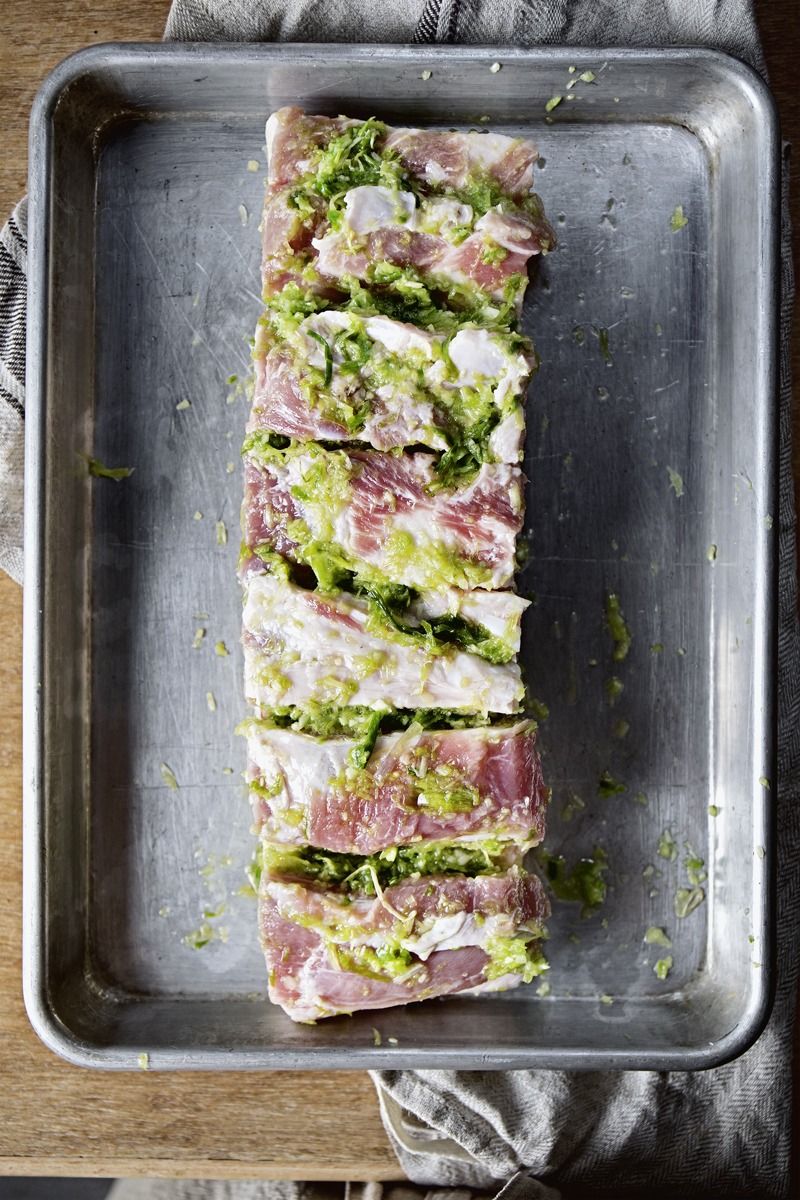 [/ezcol_1third] [ezcol_1third]
[/ezcol_1third] [ezcol_1third]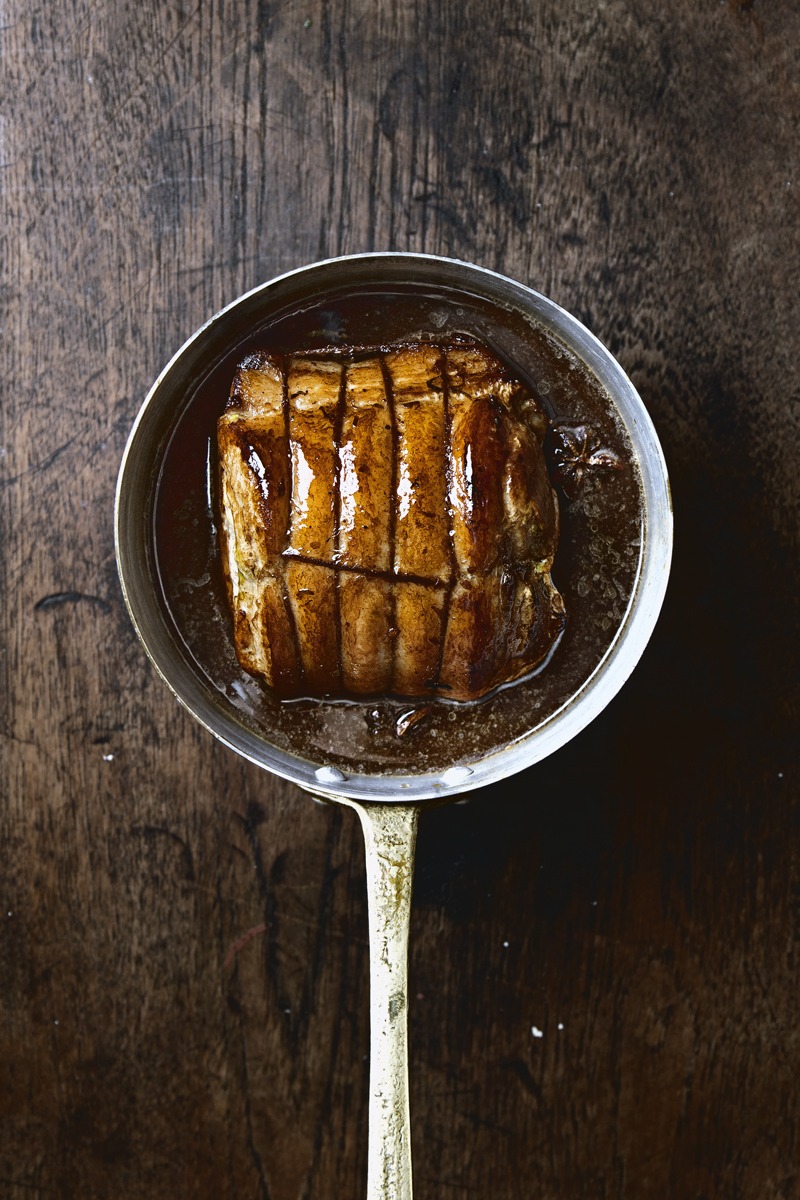 [/ezcol_1third] [ezcol_1third_end]
[/ezcol_1third] [ezcol_1third_end]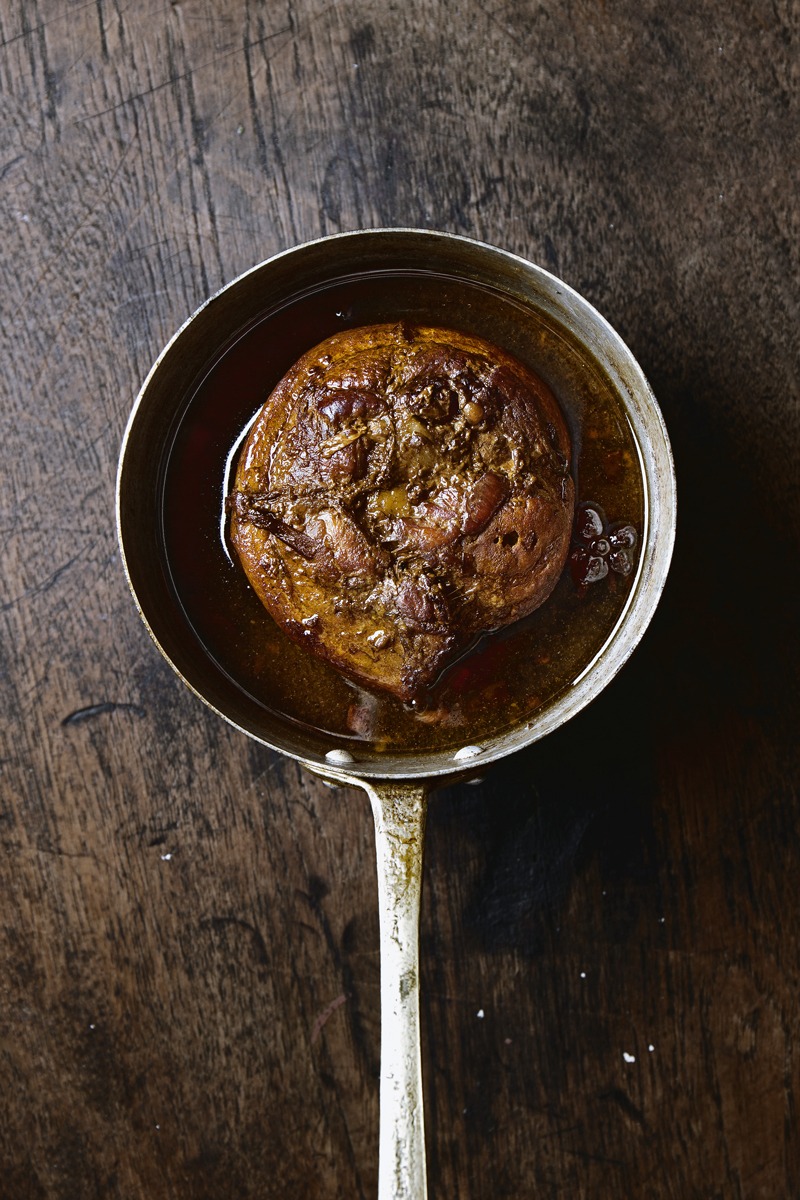 [/ezcol_1third_end]
[/ezcol_1third_end]
[ezcol_1third]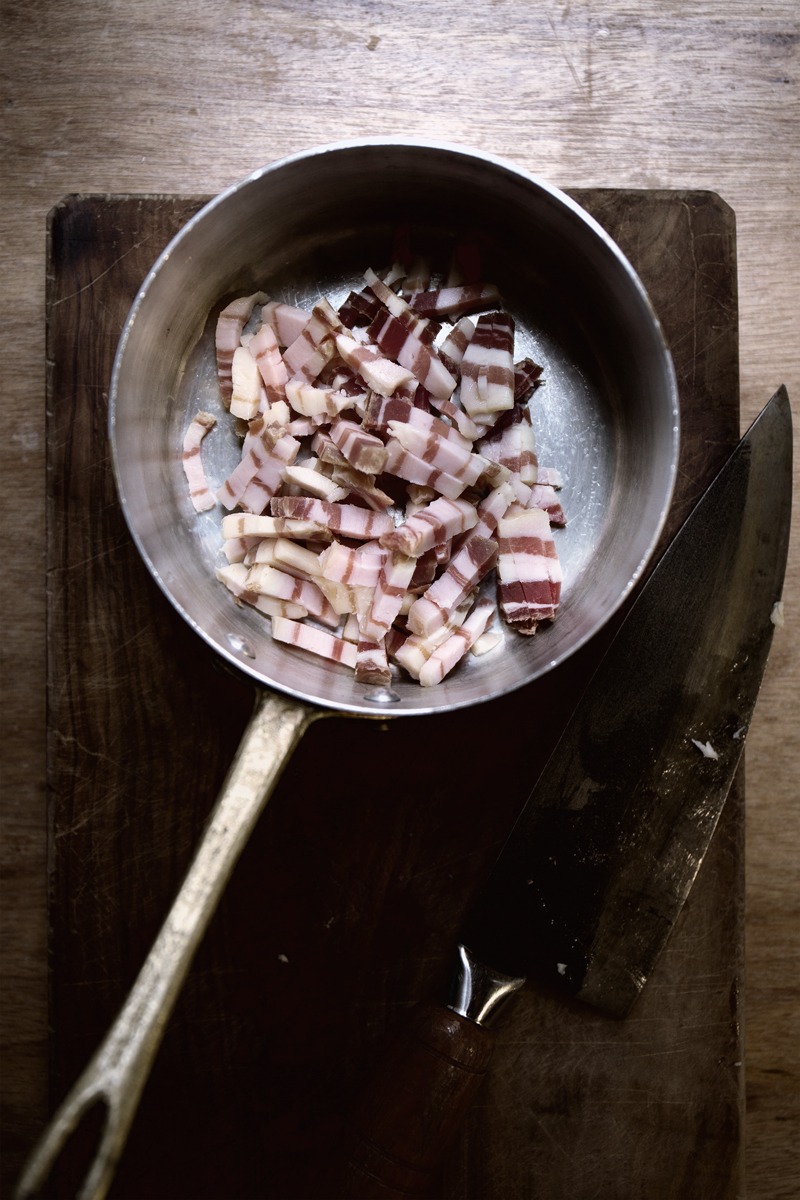 [/ezcol_1third] [ezcol_1third]
[/ezcol_1third] [ezcol_1third]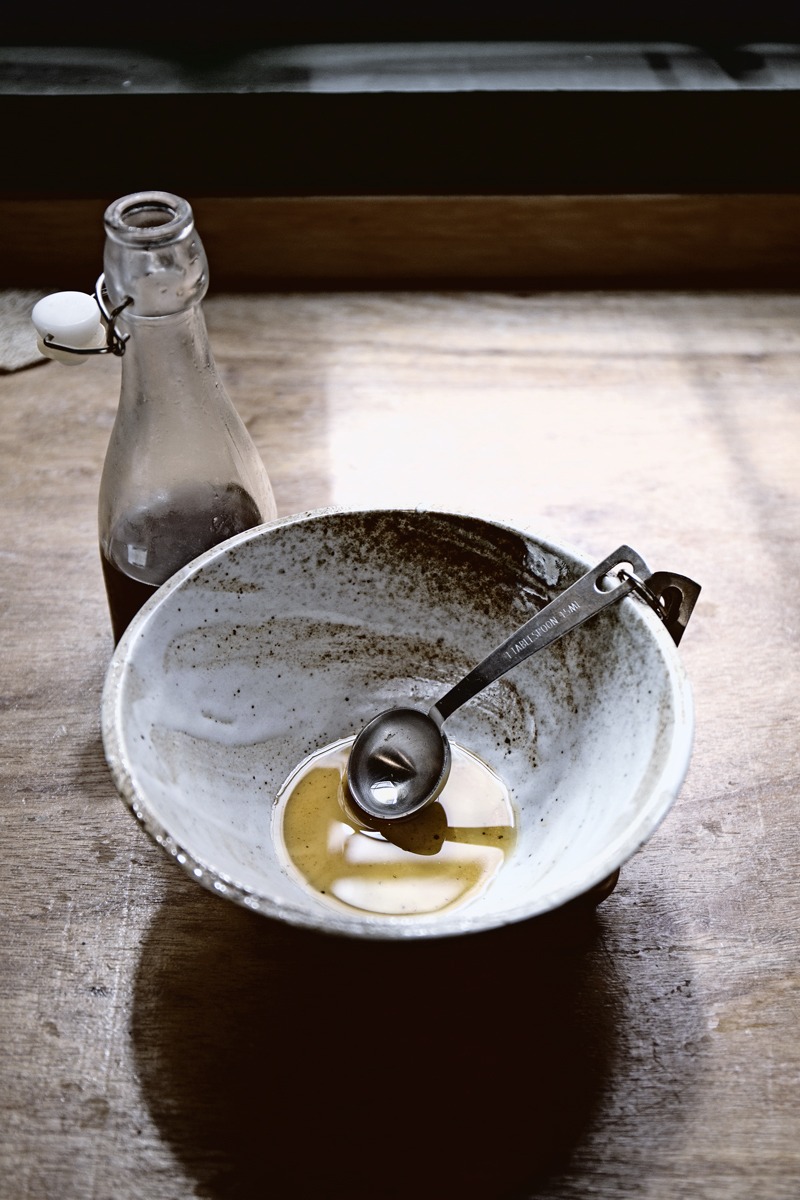 [/ezcol_1third] [ezcol_1third_end]
[/ezcol_1third] [ezcol_1third_end]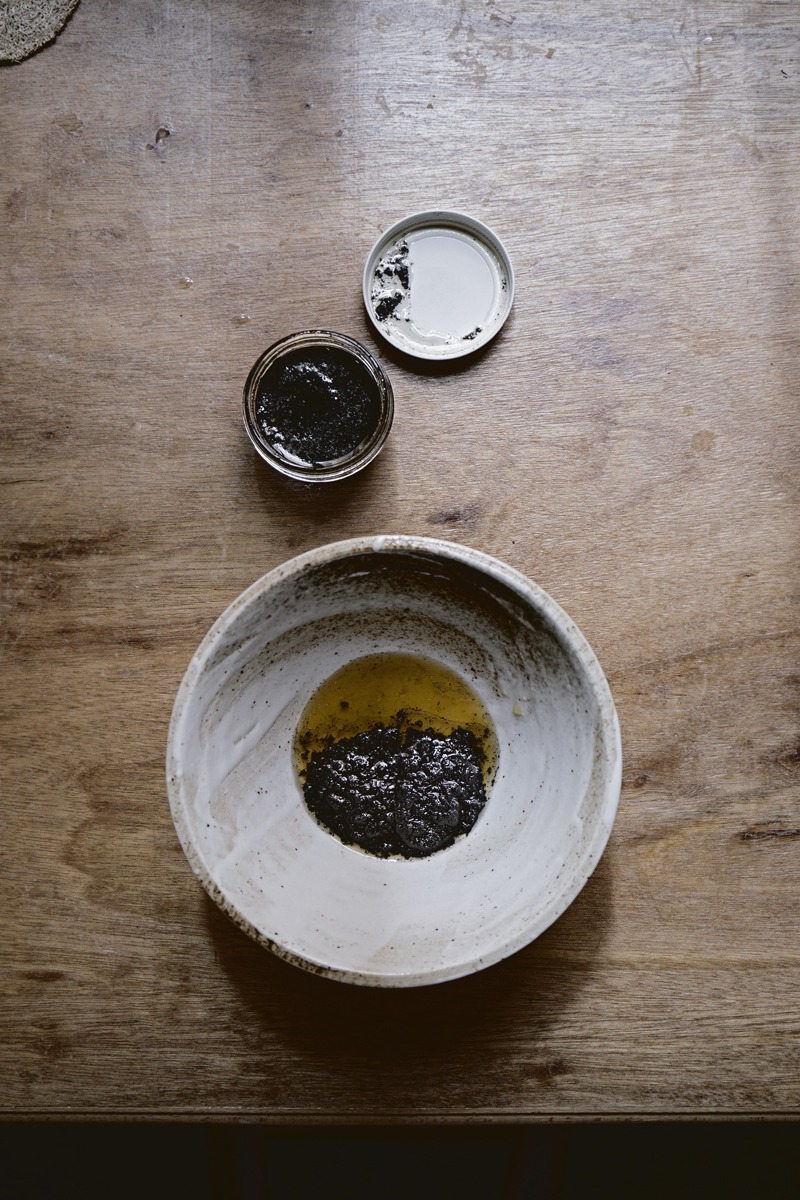 [/ezcol_1third_end]
[/ezcol_1third_end]
[ezcol_1half]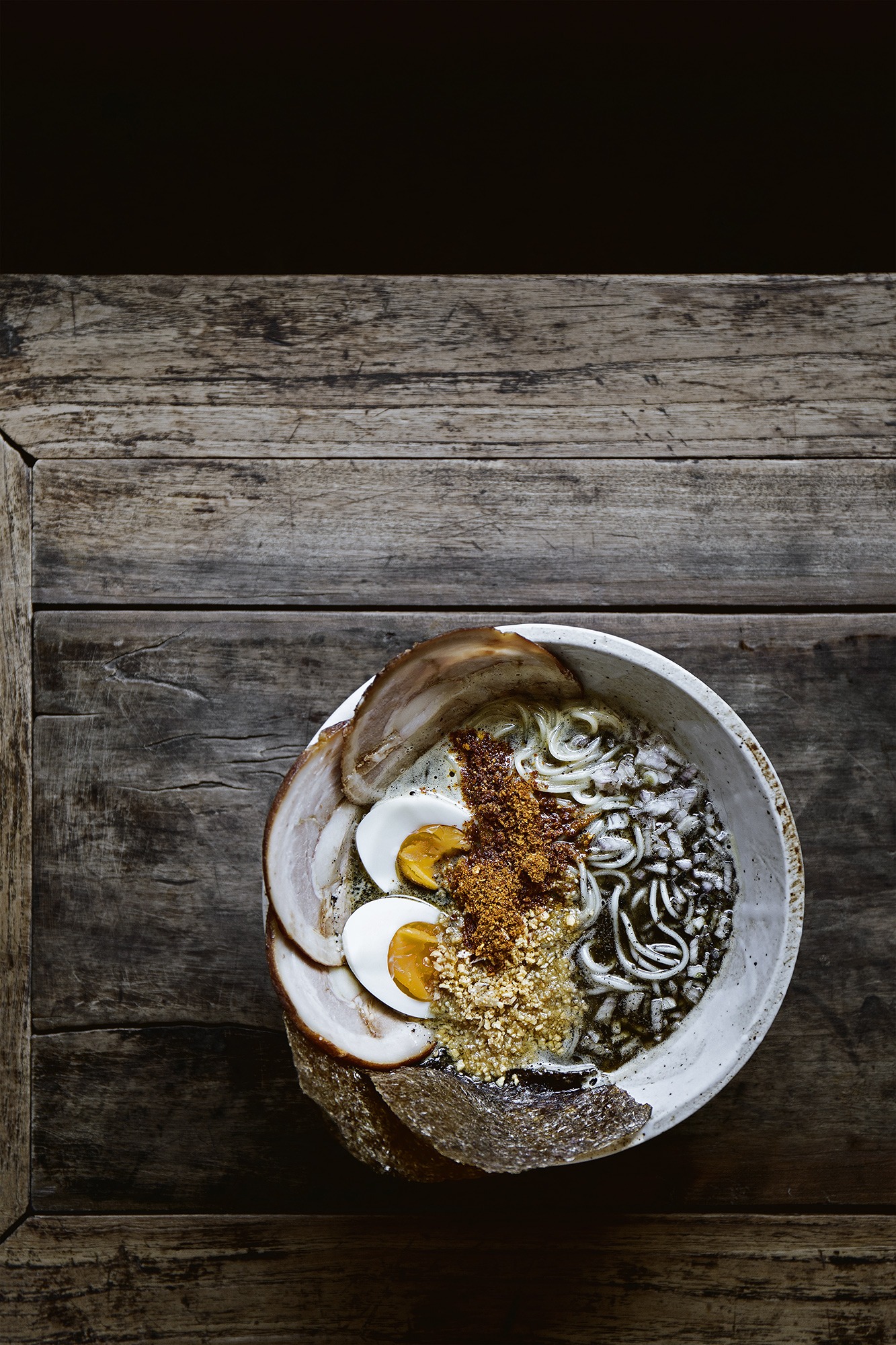 [/ezcol_1half] [ezcol_1half_end]
[/ezcol_1half] [ezcol_1half_end] [/ezcol_1half_end]
[/ezcol_1half_end]
[ezcol_1half]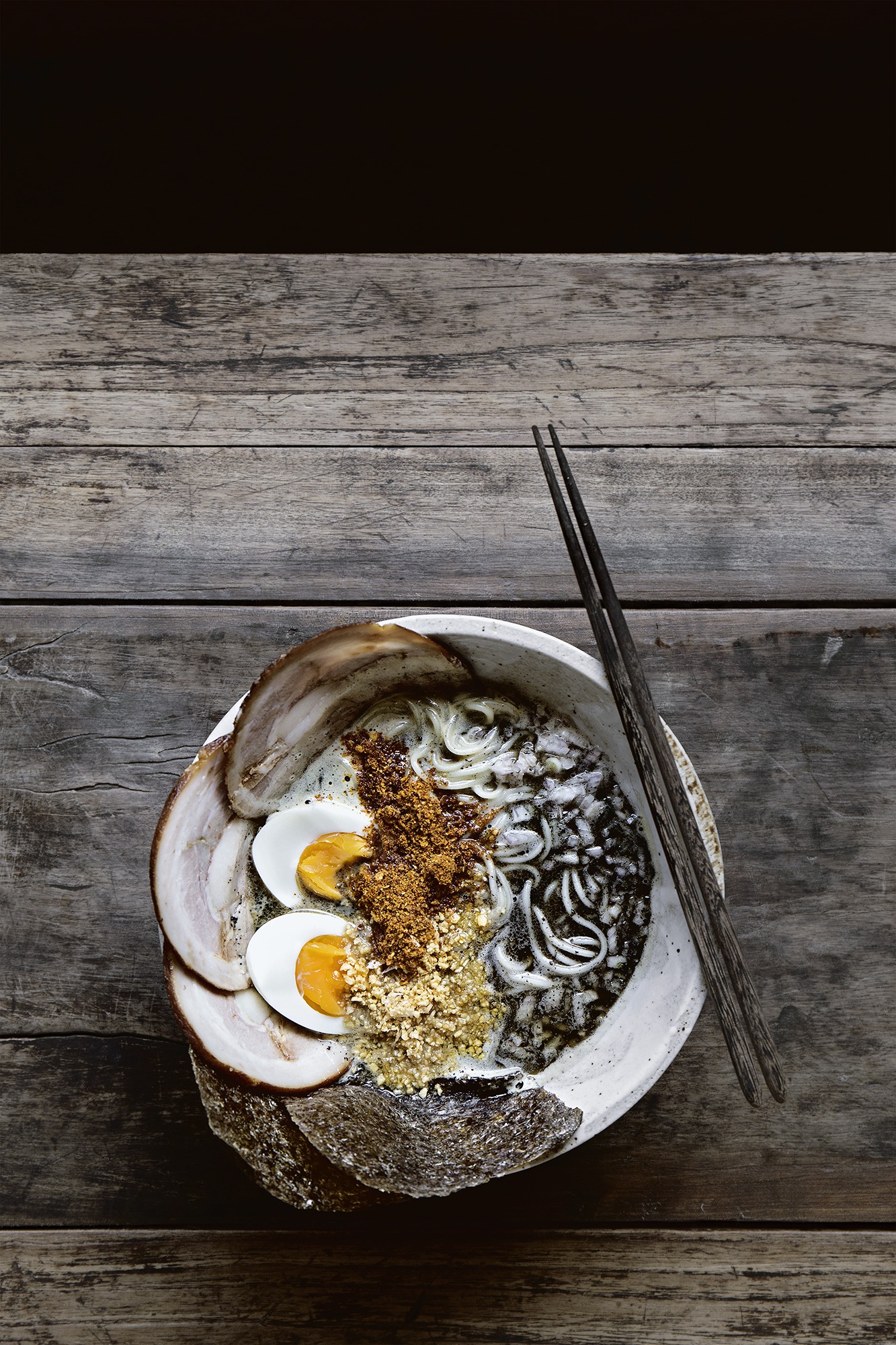 [/ezcol_1half] [ezcol_1half_end]
[/ezcol_1half] [ezcol_1half_end]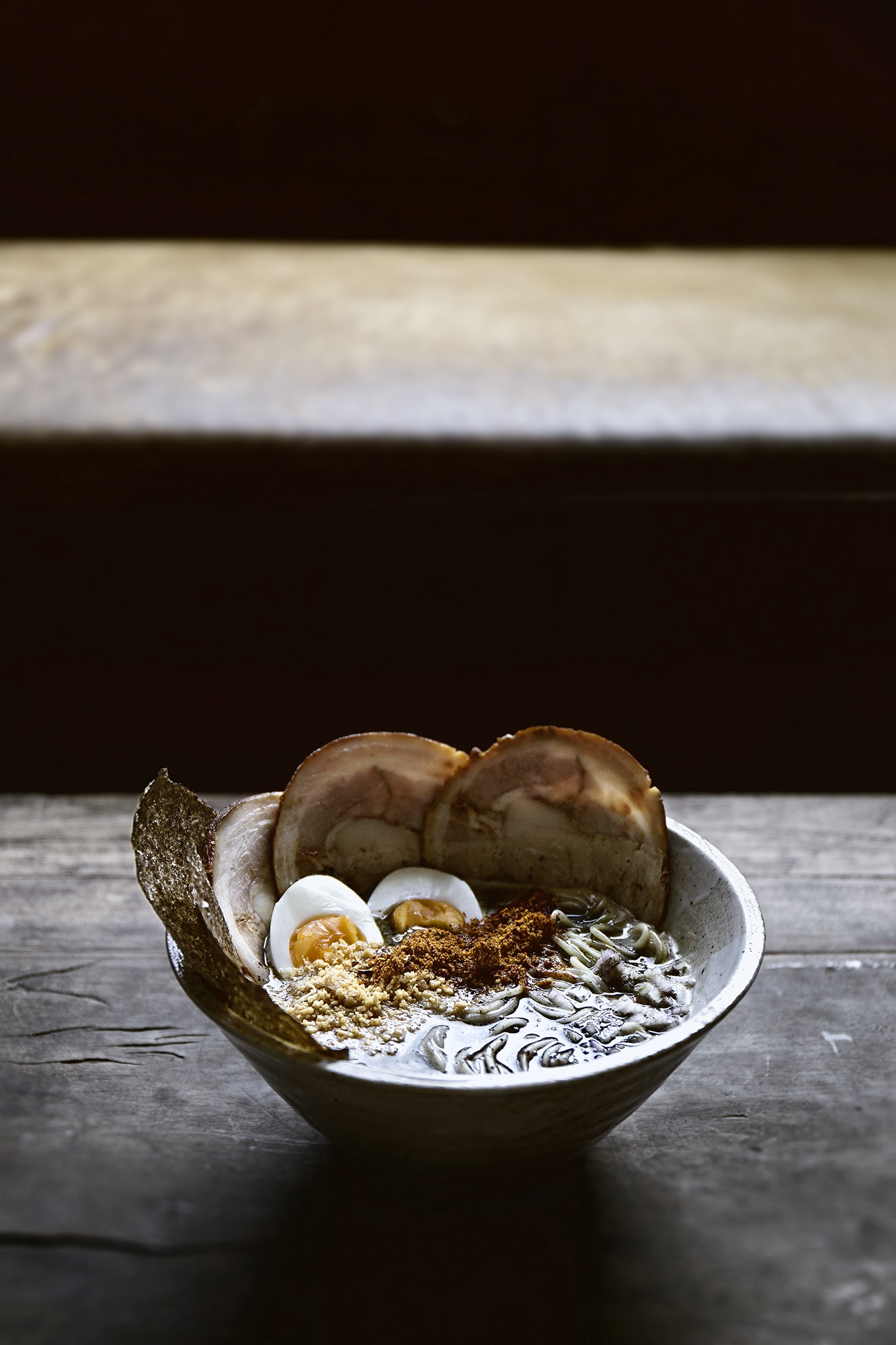 [/ezcol_1half_end]
[/ezcol_1half_end]
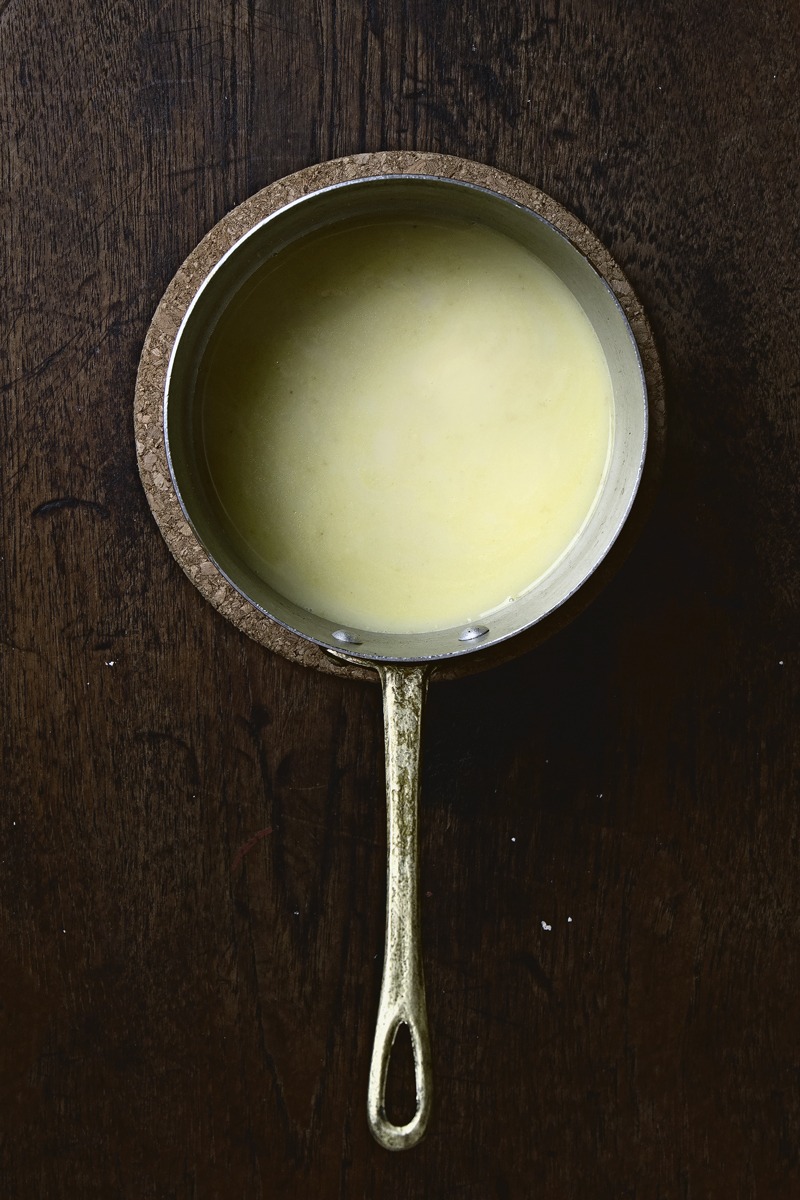
To complete this recipe, you'll need chicken white broth/tori paitan (an ultra-condensed milky broth made from chicken instead of pork) and ramen seasoning (a liquid extract of several umami-rich ingredients), both of which is in our upcoming cookbook, The Art of Escapism Cooking. But if you already have your own recipe for ramen broth and seasoning, you can try that, too.
Ingredients
- 28 oz (1.7 lbs/785 grams) rectangular strip of skinless pork belly
- 4 scallions, trimmed
- 3 cloves of garlic, peeled
- 1 1/2 cup chicken stock
- 1/3 cup soy sauce
- 1/3 cup dark soy sauce
- 2 tbsp dark brown sugar
- 1 tbsp fish sauce
- 2 star anise
- 1 small cinnamon stick
- 1/4 tsp garam malasa
- 3.5 oz (0.2 lb/100 grams) Italian guanciale or fatty pancetta (see note *), finely diced
- 4 tbsp toasted sesame oil
- 6 cloves of garlic, peeled
- 1 tbsp chicken stock
- 4 tbsp (64 grams) squid ink
- 1 tbsp + 1 tsp ramen seasoning, recipe in the cookbook
- 2 tbsp squid inked lard
- 2 cups (480 ml) of chicken white broth/tori paitan, recipe in the cookbook
- 1 portion of store-bought fresh ramen, or my all-purpose homemade ramen from the cookbook
- 1 soft boiled egg
- 1/2 sheet of Japanese toasted seaweed
- 2 tbsp finely mined onion or scallion
- 1 tbsp fried garlic powder
- Helldust to taste, recipe in the cookbook and win a jar by entering the sweepstake
Instructions
- MAKE CHAR SIU: Start the day before serving. Place the pork belly fat-side down, and trim the meat-side of the pork belly so it's even in thickness, and cut a few slits crosswise 2/3 of the way through. In a food-processor or immersion blender, blend scallion and garlic until finely minced. Rub/stuff the mixture into the slits and the juice all round. Tightly roll the pork belly lengthwise, fat-side out, and tie it together with butcher twines.
- In a small pot that will snuggly fit the entire pork belly, coat the bottom with a tiny bit of oil and heat over medium-high heat. Brown the entire exterior of the pork belly until caramelized, then add chicken stock, soy sauce, dark soy sauce, dark brown sugar, fish sauce, star anise, cinnamon stick and garam masala. Cover the pot and maintain at a simmer, turning the pork belly several times in between, and cook for 2:30 hours. Once cooled, transfer everything into a small container or bag that will allow the liquid to completely submerge the pork belly, and let sit in the fridge overnight before using.
- MAKE SQUID INKED LARD: In a small non-stick pot, cook the guanciale or pancetta over medium heat until all the fat is rendered out and the guanciale is dried and crispy. Once cooled, add toasted sesame oil, garlics, chicken stock and squid ink, and with an immersion blender (the quantity may be too small for normal blender), blend until smoothly pureed. Keep inside an air-tight jar in the fridge. Can be made up to 3 days ahead.
- FOR EACH SERVING OF RAMEN (This is for a single serving of ramen!) : Twenty minutes before serving, preheat the oven to 210°F/100°C. Place 2 tablespoons of squid inked lard (you can also add this on top of the ramen at the very last for a more dramatic look) and 1 tablespoon of the Ramen Seasoning in each serving bowl, then place the bowls in the oven. It’s extremely crucial that the serving bowls be hot before serving.
- Place 2 cups (480 mL) Chicken White Broth (per serving) inside a saucepan that’s deep enough to accommodate the immersion blender. Bring the broth to a boil over high heat and keep it at an active boil until it’s reduced to 1 1/2 cups (360 mL) per serving (so, by about one-fourth).
- Meanwhile, bring a large pot of water to a boil over high heat and have a sieve ready by the sink. If you're using my all-purpose ramen recipe, add the ramen and gently loosen the strands with chopsticks to keep them from clumping up. If the ramen is frozen, allow 30 seconds or so in the hot water for the strands to loosen before separating. Whether the ramen is fresh or frozen, it will briefly stop the water from boiling. When the water comes back to a boil, turn the heat to medium to keep the water from boiling over, and cook for 1 minute exactly. Do not estimate this; time it. If you're using store-bought ramen, cook it according to package instruction.
- Meanwhile, Insert the immersion blender into the reduced Chicken White Broth (or use a normal blender) and give it several stern pulses, until the broth is emulsified and slightly foamy. Pour the broth into the serving bowls to mix with the seasonings.
- Transfer the ramen to the sieve and rinse it under cold water for just a few seconds. The purpose of this is not to cool the noodles but to remove some of the starchy water and bring back the bounce. Drain the ramen thoroughly and place it in the serving bowls. Then top each serving with 3 very thin slices of char siu, soft boiled egg, toasted seaweed, fried garlic powder, finely minced onion, and helldust according to taste.
Notes
* Guanciale is Italian cured pork jowl. It has a much higher fat content than the more common pancetta. But if you cannot find guanciale, just buy a fattier section of pancetta.
SUBSCRIBE TO GET NEW RECIPE NOTICES:


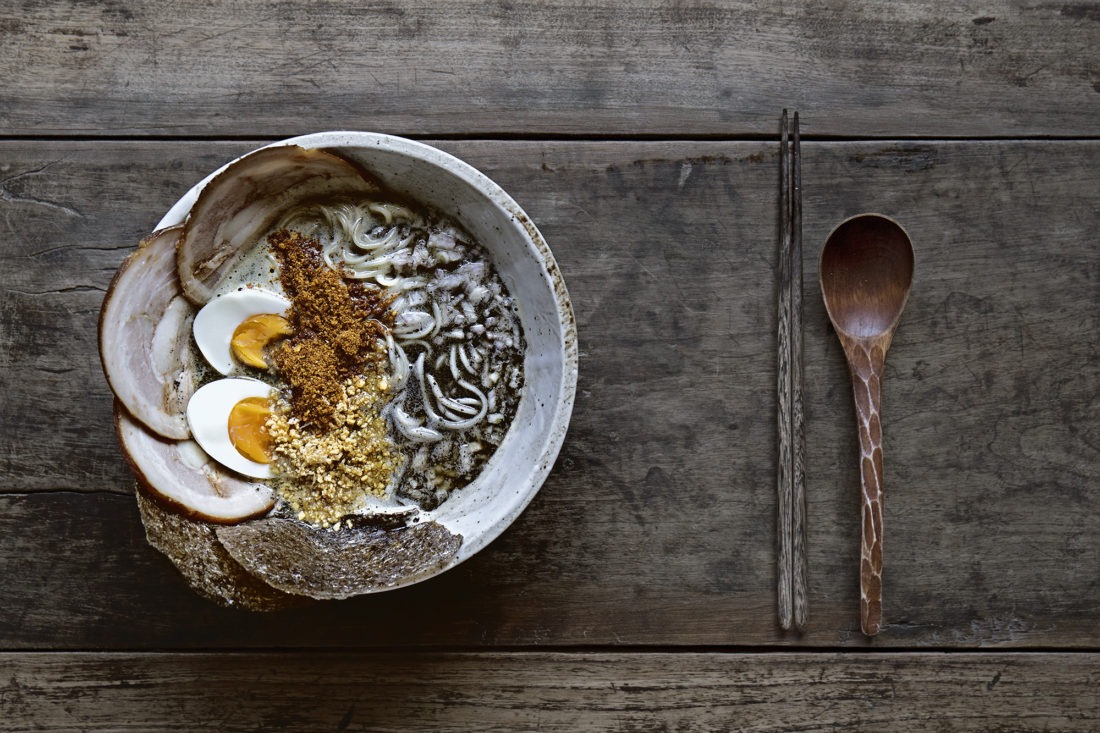
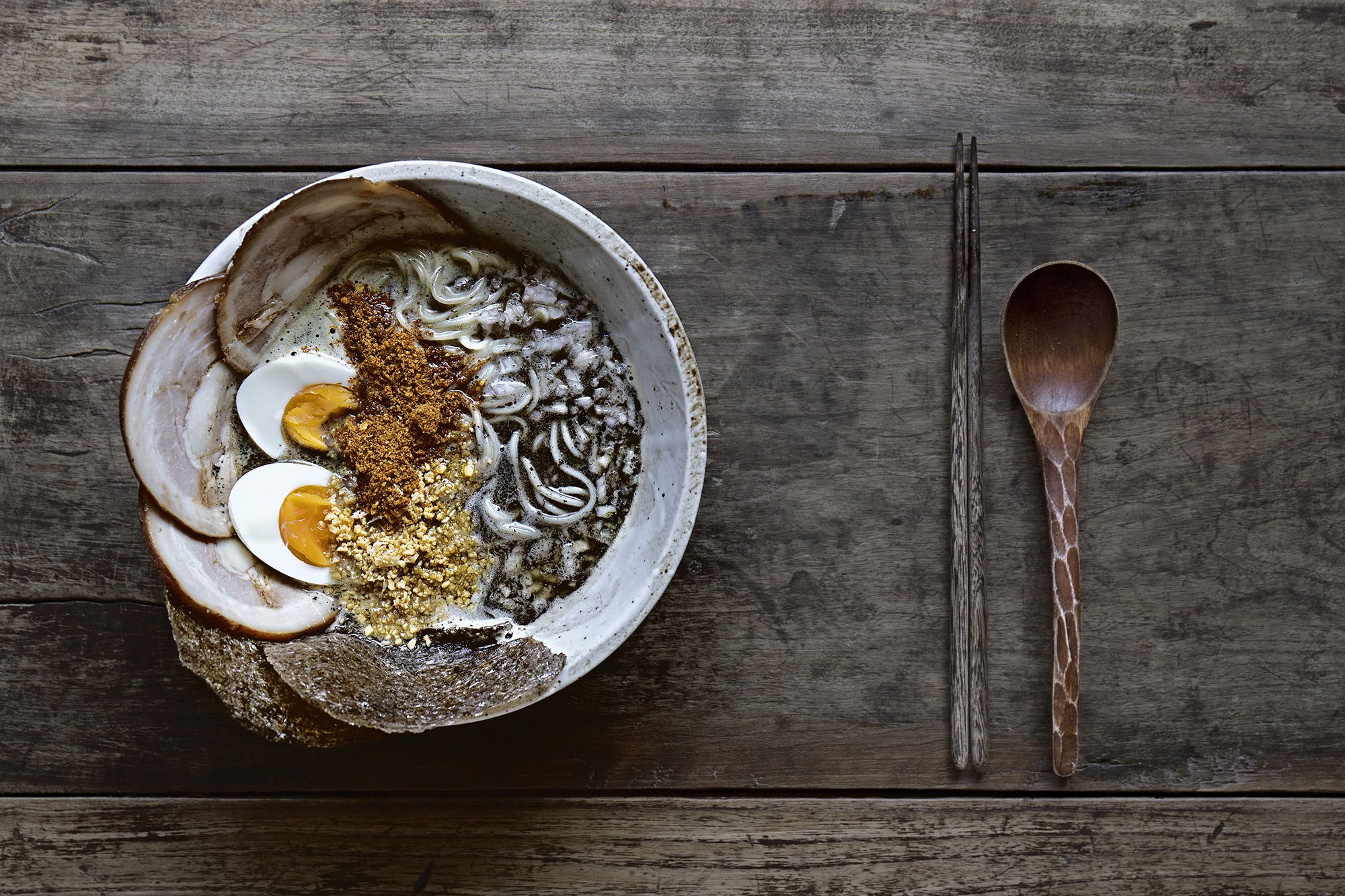
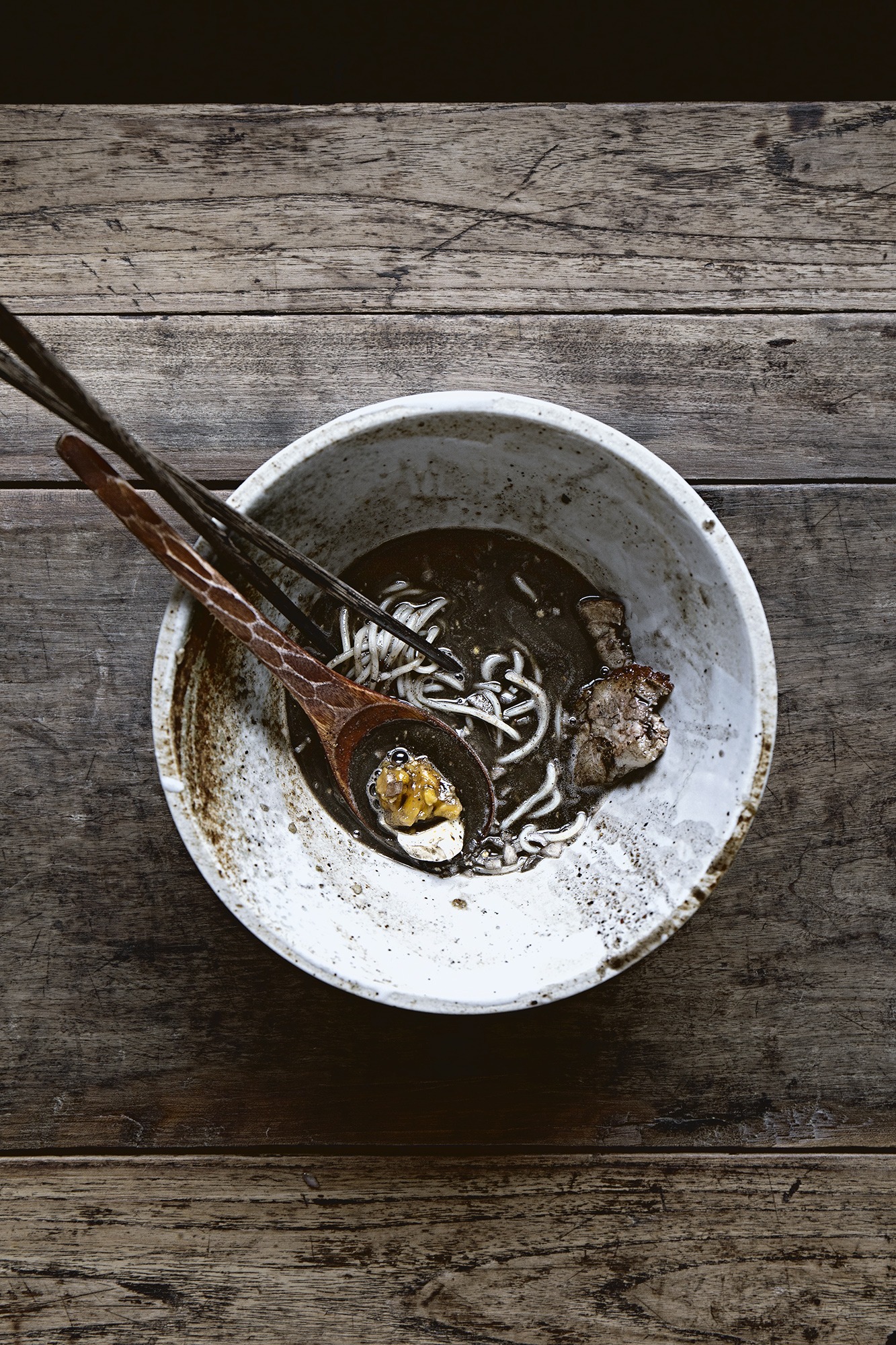
Jason Tsang
September 20, 2019 at 10:36 PMThis is fuckin awesome!!!
Rachel >> Strangers on a Plain
September 23, 2019 at 2:42 AMI used to be so scared of black food until I spent some time in Japan where I had a lot of black sesame stuff and learned to get over it. This looks awesome. Might have to have an at home date night and try this out.
Francis Thomas
October 11, 2019 at 12:49 PMI can’t wait to try this. My mouth started salivating by seeing this only. Cookies are my favorite and any type of cakes is great for me. I love to try different types of cakes and this is kind of different one which I haven’t tried yet. So I’m definitely going to try this soon and will definitely let you know, how it turned out. I never regretted any moment that came to your blog!
https://usawriters.org
Kim
October 23, 2019 at 5:03 AMI’m still making my way through the book (cover-to-cover), but I took a quick peek at the tori paitain recipe and I think that’ll be the first thing I try. It’s just so clever!
Do you have a previous recipe for that perfect soft boiled egg? I did a quick search on the blog, but for all your 102 different ways to prepare eggs, I didn’t see one for a soft boiled egg just like this (Missing: perfect jammy egg, last seen: with roasted butternut squash)
Megan
May 31, 2020 at 9:02 AMWhat type of immersion blender do you have? I tried making the tori paitan broth, and my immersion blender broke with all the bones. Looking to get a new one, but want to get one that can better handle the bones
mandy@ladyandpups
May 31, 2020 at 1:57 PMMegan, I believe it was a panasonic. The chicken scaffolds and feet bones should be very soft after long boiling. Unless you included big drumstick and thigh bones? In the case they have to be cut into small pieces first.
Megan
June 4, 2020 at 11:32 AMI used chicken backs, chicken necks, and chicken feet. The feet and necks were fine – I think maybe the backs had a few big bones that were hard to blend. What are chicken scaffolds?
mandy@ladyandpups
June 4, 2020 at 2:01 PMMegan, yup basically what you described. Next time break the back in smaller pieces first to see.
Ellen
October 23, 2020 at 7:56 PMHello, i just finished making the broth. After blending it, the color of my soup is much more brown than the ones in your book pictures. Its due to the fine ground bones. And even after straining it, the fine bones are still there. Its the size of a spice powder so I can still feel it. Any thoughts on this?
mandy@ladyandpups
October 23, 2020 at 9:55 PMEllen, it sounds like it’s because your strainer’s mesh/ holes are too big??
Maudie Ryan
February 12, 2021 at 10:40 PMI agree with you that in our time in the era of information technology software is very important in every area.
www.wonderfulcook.com
December 30, 2022 at 1:42 PMThis looks amazing! Totally making this later on this week!! Can’t wait!